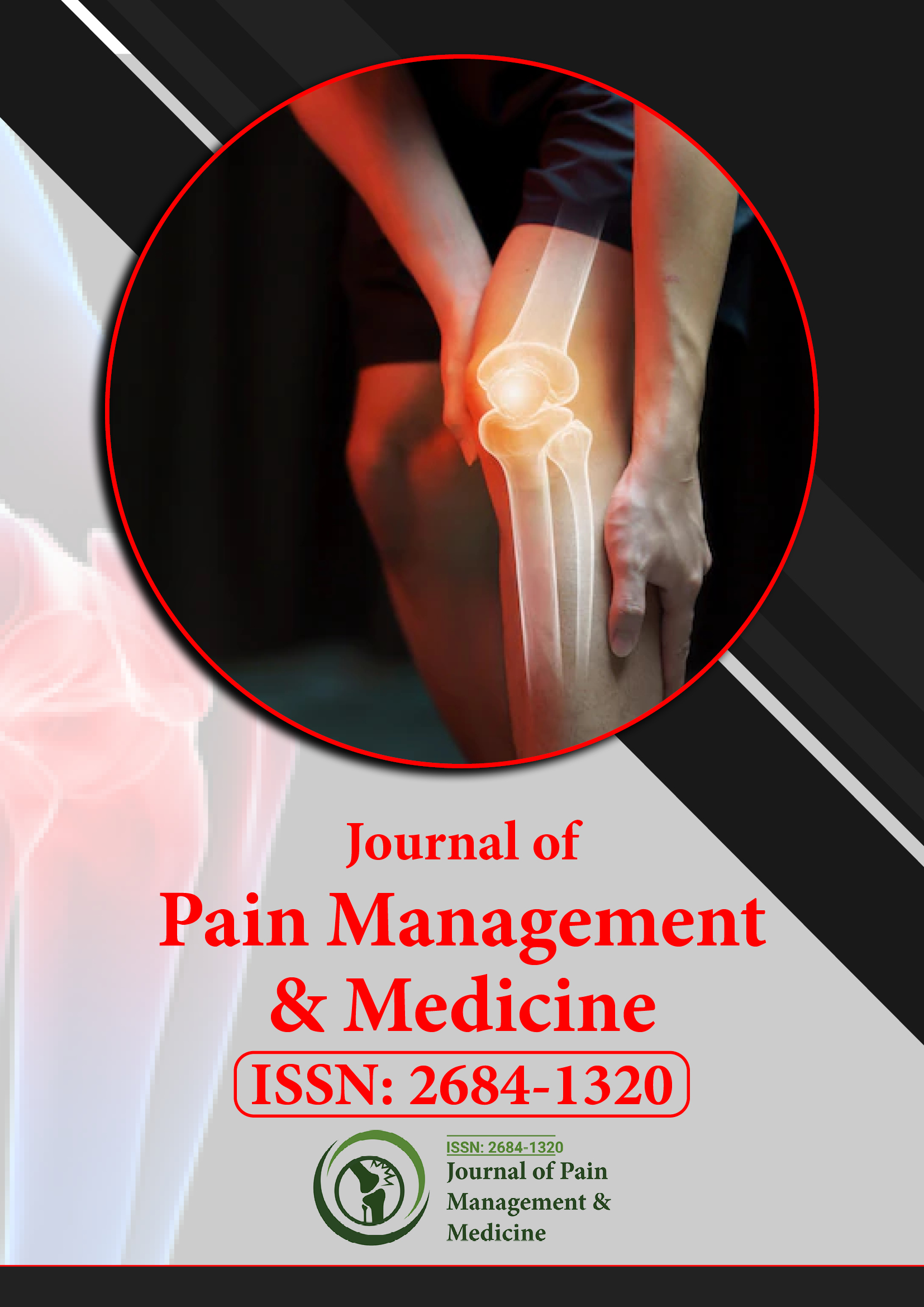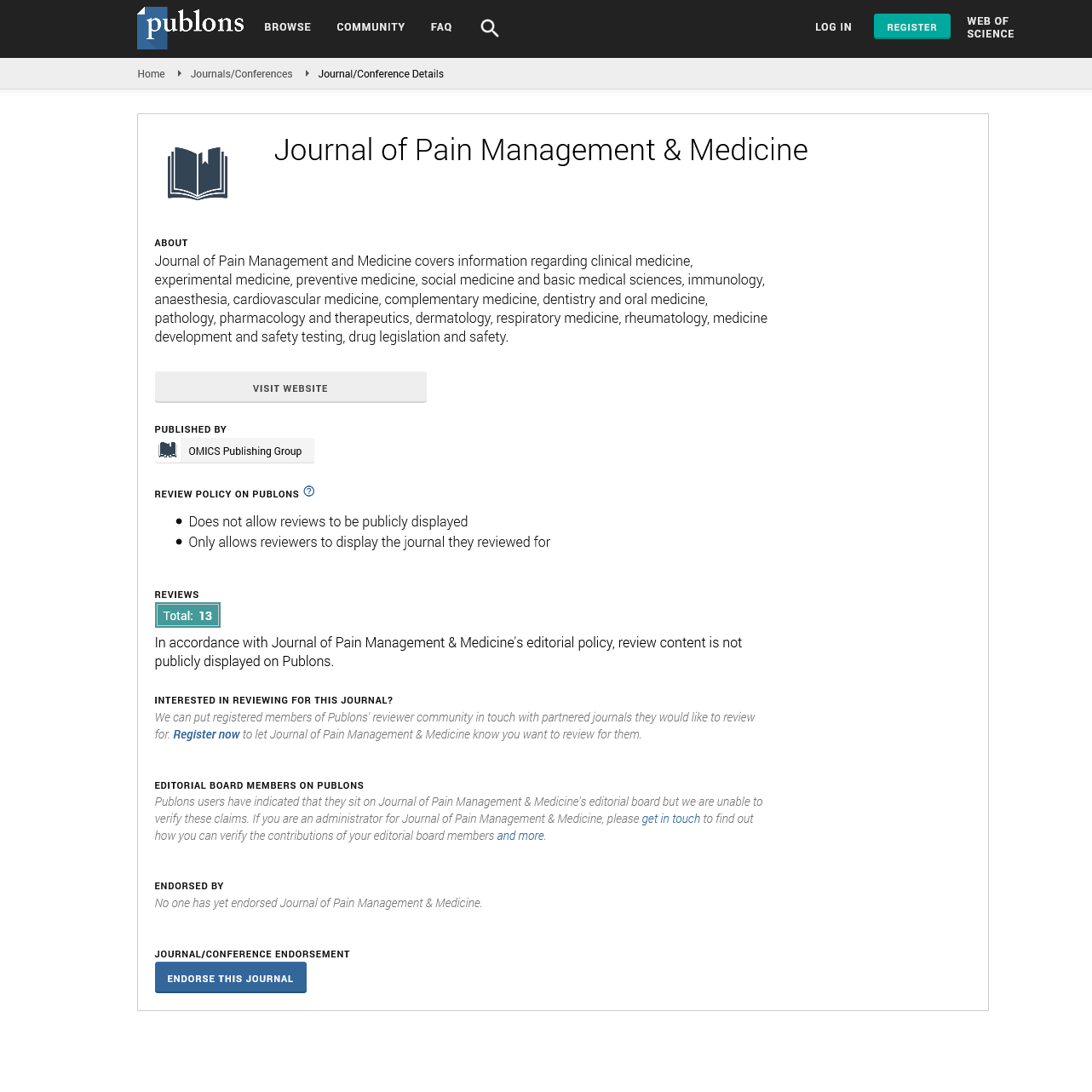Indexed In
- RefSeek
- Hamdard University
- EBSCO A-Z
- Publons
- Euro Pub
- Google Scholar
- Quality Open Access Market
Useful Links
Share This Page
Journal Flyer

Open Access Journals
- Agri and Aquaculture
- Biochemistry
- Bioinformatics & Systems Biology
- Business & Management
- Chemistry
- Clinical Sciences
- Engineering
- Food & Nutrition
- General Science
- Genetics & Molecular Biology
- Immunology & Microbiology
- Medical Sciences
- Neuroscience & Psychology
- Nursing & Health Care
- Pharmaceutical Sciences
Opinion Article - (2025) Volume 11, Issue 2
Empowering the Patient: The Indispensable Role of Education and Shared Decision-Making in Chronic Pain Management
Thabo M. Nkosi*Received: 01-Mar-2025, Manuscript No. JPMME-25-28851; Editor assigned: 03-Mar-2025, Pre QC No. JPMME-25-28851 (PQ); Reviewed: 17-Mar-2025, QC No. JPMME-25-28851; Revised: 24-Mar-2025, Manuscript No. JPMME-25-28851 (R); Published: 31-Mar-2025, DOI: 10.35248/2684-1320.25.11.313
Description
Chronic pain, a persistent and often debilitating condition, presents a significant challenge for both patients and healthcare providers. The complexity of chronic pain, with its intricate interplay of physical, psychological, and social factors, necessitates a paradigm shift in how we approach its management. Moving beyond a purely biomedical model towards a patient-centered approach that prioritizes patient education and shared decision-making is not merely a matter of ethical practice; it is a fundamental pillar for optimizing outcomes and empowering individuals to live well despite their pain.
For too long, chronic pain management has often been characterized by a paternalistic model, where healthcare providers dictate treatment plans with limited input from the individuals living with the daily realities of their pain. This approach can lead to feelings of disempowerment, frustration, and poor adherence to treatment. In contrast, patient education and shared decision-making foster a collaborative partnership between patients and clinicians, recognizing the unique expertise and values that each party brings to the table.
Patient education is the cornerstone of this empowering approach. Providing individuals with comprehensive and understandable information about their pain condition – its underlying mechanisms, potential contributing factors, available treatment options (both pharmacological and nonpharmacological), self-management strategies, and realistic expectations – is crucial for fostering a sense of understanding and control. When patients are educated about their pain, they are better equipped to actively participate in their care, make informed choices, and develop effective coping mechanisms. This knowledge can also help to reduce fear and anxiety associated with their pain, leading to improved adherence to treatment recommendations.
However, education alone is insufficient. Shared decision-making takes this a step further, actively involving patients in the process of selecting treatment options. This involves a genuine dialogue where clinicians present evidence-based information about the benefits and risks of different approaches, while patients articulate their values, preferences, goals, and concerns. The final treatment plan is then a collaborative agreement that reflects both the clinical expertise of the provider and the individual needs and desires of the patient.
The benefits of integrating patient education and shared decision-making into chronic pain management are manifold. Firstly, it can lead to improved patient adherence to treatment plans. When patients feel heard, understood, and actively involved in the decision-making process, they are more likely to be invested in and committed to the chosen course of action. Secondly, it can result in more realistic expectations regarding treatment outcomes. Educating patients about the complexities of chronic pain and the often-incremental nature of improvement can help to prevent disappointment and frustration, fostering greater persistence with therapy.
Furthermore, empowering patients through education and shared decision-making can lead to increased self-efficacy in managing their pain. As individuals gain a better understanding of their condition and actively participate in developing coping strategies, they feel a greater sense of control over their pain, which can, in turn, lead to reduced pain perception and improved functional abilities. This active engagement can also foster a sense of hope and promote a more positive outlook.
Moreover, this collaborative approach can lead to better alignment between treatment goals and patient values. What constitutes a "successful" outcome can vary significantly from person to person. For some, it might be a reduction in pain intensity, while for others, it might be improved functional capacity or the ability to engage in meaningful activities. Shared decision-making ensures that treatment goals are tailored to what matters most to the individual patient, leading to greater satisfaction with care.
However, implementing effective patient education and shared decision-making in the busy clinical setting can present challenges. It requires time, effective communication skills, and a genuine commitment from healthcare providers to partner with their patients. Overcoming these barriers through training, the development of accessible educational resources, and the adoption of patient-centered communication strategies is essential.
In conclusion, patient education and shared decision-making are not merely desirable elements of chronic pain management; they are indispensable for optimizing outcomes. By empowering individuals with knowledge, actively involving them in treatment decisions, and fostering a collaborative partnership, we can move towards a more effective, patient-centered, and ultimately more successful approach to managing the complexities of chronic pain. Embracing this paradigm shift is crucial for improving the lives of millions living with persistent pain and fostering a healthcare system that truly values and respects the individual patient experience.
Citation: Nkosi TM (2025) Influence of Psychological Resilience on Pain Perception and Functional Disability in Individuals with Osteoarthritis. J Pain Manage Med. 11.313.
Copyright: © 2025 Nkosi TM. This is an open access article distributed under the terms of the Creative Commons Attribution License, which permits unrestricted use, distribution, and reproduction in any medium, provided the original author and source are credited.

